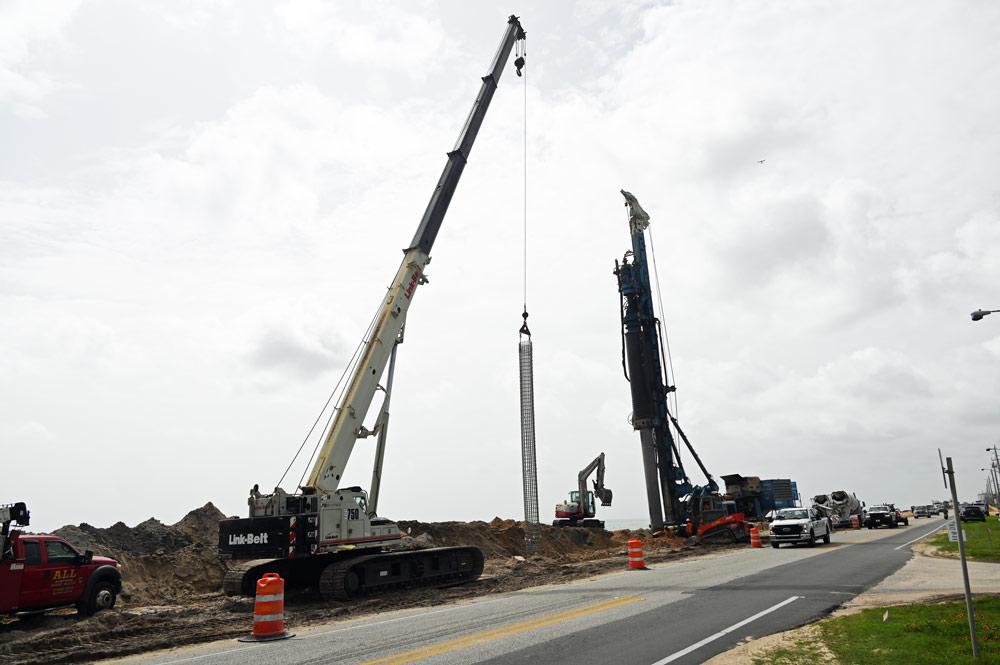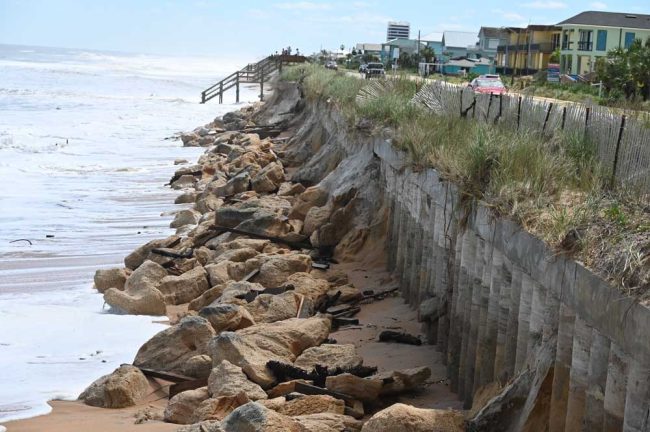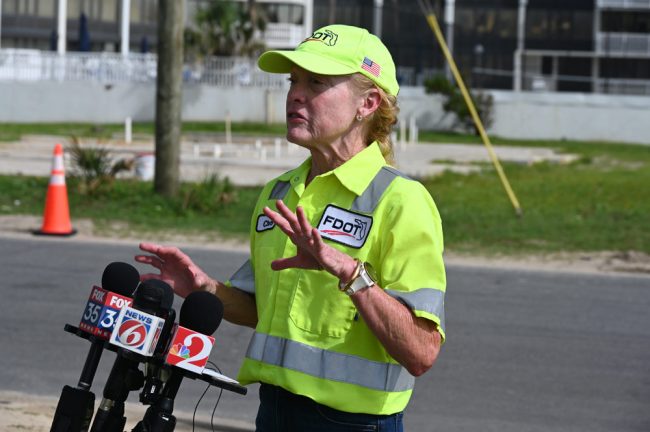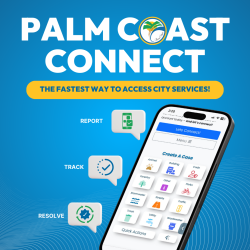
In time for hurricane season projected to spin 13 to 19 named storms, the 1.3-mile seawall at the south end of Flagler County is complete but for a 50-foot stretch–delayed because of a turtle nest. An equally long sea wall 6 miles south, in Volusia County, will be completed by early fall, with a cover of vegetation completed by year’s end.
“I’m glad to tell you, in all these years, A1A is going to be with the highest level of protection it’s ever had,” Ron Meade, maintenance engineer with DOT’s District Five, said, noting the seven-mile stretch from the Flagler Beach pier, now protected by a renourishment project, almost down to the sea wall. “But I know Mother Nature, she has her own plan, so we’re always on the ready.”
The combined $117 million Florida Department of Transportation projects were financed mostly with federal money, a DOT spokesperson said. DOT decided to build them after Hurricanes Ian and Nicole again severely damaged State Road A1A south of the pier, while leaving the area intact north of it.
The reason: DOT in 2019 had built a 5,000-foot “secant wall” from North 18th Street in Flagler Beach to Osprey Drive in Beverly Beach, “and that wall did its job,” Christine Barone, the DeLand operations engineer for DOT, said today. After gathering a “strike team” of state and local officials and input from local communities, and in combination with projected beach renourishments along the shore, DOT decided to build the two walls where damage and erosion were severe, and where renourishment was not planned.

The structures are called “secant walls,” which refers to the concrete pillars 18 and 36 feet deep, each pillar 36 inches in diameter, that alternate and overlap the length of the wall. Every other pillar is reinforced with fiberglass rebar that is pushed through the wet concrete. The pillars are then capped with a square, thick concrete cover that holds them all together. The cap alone will use 2,400 cubic yards of concrete. Each part of those operations was visible at different segments of the wall construction in Volusia County as an enormous drill dug the holes and simultaneously filled them with concrete.
Uncovered, the wall is quite ugly, as Flagler Beach discovered when Ian washed out all the sand that was covering the 5,000-foot wall at the north end of town. It’s just concrete, colored by sand and minerals over time. But the walls are designed to be buried and covered by natural-looking sand dunes. The two new walls will be covered by 123,000 tons of sand trucked in from a quarry in Gainesville (as opposed to dredged from offshore, as was and will again be the case for a Flagler County’s beach renourishment projects further north).
DOT eventually reburied the wall in north Flagler Beach in sand, and has a contractual arrangement to do the same should the newer walls get denuded, though DOT did not provide the details of that arrangement or project how quickly the walls would be reburied after a storm. Once covered, a visitor unfamiliar with the local history would not know that a wall is there, especially with the vegetation that gets planted, growing lush after a year or two–assuming no serious storms damage the dunes.

“Mother Nature, she’s got a mind of her own, and I’ve tried controlling her, and I failed miserably. But, you know, we learn at each event,” Barone said. What DOT learned was that to protect A1A, the sea wall option was best, despite opposition to sea walls a decade ago. The success of the secant wall in Flagler Beach turned public opinion in their favor, especially since they would be limited to areas where beach renourishment would not take place. In north Flagler Beach after Ian and Nicole, there were no impacts to local residents, at least north of the pier. “The businesses were open, folks could move about like they are accustomed to in the community. So we go back to protecting the community,” Barone said. That was the wall’s work.
Barone and other DOIT officials spoke to several reporters today at the two walls after DOT gathered media to provide an update on the projects in conjunction with the beginning of hurricane season on June 1.
The Flagler portion is so far along that vegetation in neat, tight rows now covers the new dunes. The wall is invisible beneath the new dunes of white sand, contrasting with Flagler’s copper-colored coquina.

“If you look over the dune today, you’ll see some turtle nests that are outlined,” Barone said. “So we worked closely with the Turtle Patrol every morning, to monitor the limits of the project and delineate the turtle nest areas. And so we are almost finished with the north wall here. If you do go down to the end of the north wall, you notice there still is about 50 feet where we need to reconstruct the dune and complete the plantings. The reason we have stopped there is because there’s a brand new turtle nest.”
The dunes slope at a somewhat sharper angle than those rebuilt in the Army Corps of Engineers project in Flagler Beach. But the two projects have different aims. DOT’s dunes stop as they meet the beach’s sands and will not go further. The Army Corps was a full reconstruction of dunes and beach. Flagler County hopes to extend that approach across all 18 miles of beach, including the portion in front of the new wall, though that beach-management plan may be dead.
DOT’s walls have a 50-year life span. The department is monitoring the road and flying drones the entire length of A1A in Flagler and north Volusia “to just to see what the current condition is,” Meade said. “And then we have something to compare that to after a big storm. That helps us with reimbursability and those things.” He added: “I’m hopeful of good things for A1A with all of these efforts.”
DOT is also rebuilding walkovers “exactly how they were before,” Kevin Hayden, DeLand operations construction engineer, said, “same size, shape and materials, and we wanted to get those back again as soon as possible so that everybody could access the beach.”
That access if now open at the south end of the county, where only in the fall of 2022, A1A had to be closed in parts as erosion had left a cliff where the dunes used to be, and concrete jutting right up to the lapping sea. A1A is once again safe, for now.
![]()





























Dennis C Rathsam says
POPPYCOCK! My moneys on the ocean!
Atwp says
Travel a1a at least 3 times a week. The work slows traffic and cause some headaches. Been traveling this part of the road for years, nothing man does don’t stand a chance against God and his awesome power. Why build year after year and God send a storm and the progress get destroyed? Just asking. Another will come and destroy the new construction.
c says
Guaranteed! to withstand God and Nature’s best efforts, or double your ocean back :)
Seriously, though, the “50-year lifespan” citation concerns me. Who is going to be paying if (when?) the ’50 year lifespan’ turns out to be 3-4 heavy hurricanes in a couple years and done? Is there any kind of future support upon failure or an actual guarantee of the lifespan?
JT says
God gave man the ability to build sea walls and renourish beaches.
larry krasner says
This seawall/dune project, from Flagler Beach’s water tower to High Bridge Rd, was suppposed to be completed LAST FALL, not next fall!
Why so late?
How much over budget?
Who is responsible?
Why is no one investigating this, including you Pierre?